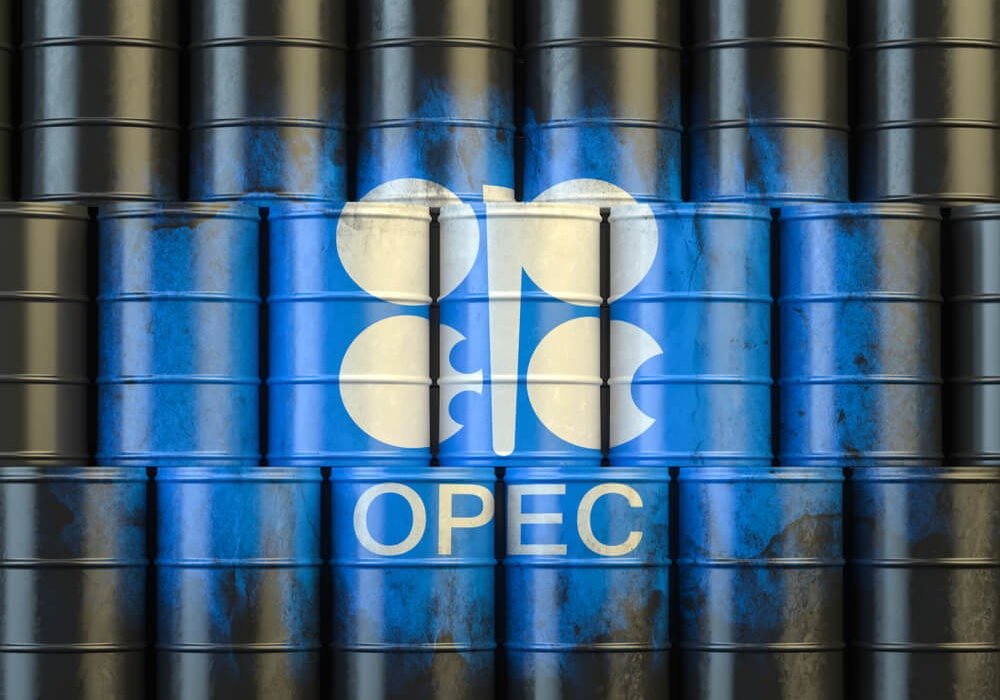On Tuesday, outweighing the passage of an extension of output cuts by Organization of the Petroleum Exporting Countries (OPEC) and its allies and as concerns over demand in a slowing economy increase, oil prices dropped.
New York-traded West Texas Intermediate crude futures plunged 23 cents, or 0.4%, to $58.86 a barrel, while Brent crude futures, the benchmark for oil prices outside the U.S., also weakened 23 cents, or 0.4%, to $64.83.
On the last day of meetings in Vienna on Tuesday, voting unanimously happened, including all OPEC and non-OPEC members like Russia, to pass the nine-month extension of their agreement to cut production by 1.2 million barrels per day.
In a morning market call on Tuesday, the head of commodity strategy at Saxo Bank explained, “They’re doing this because they’re worried about demand.”
He also added, “This is not from a position of strength; it’s from a position of weakness.”
In addition, the head of commodity strategy said as long as demand is in doubt and as the U.S. shale oil production continues to grow as it has been doing, oil producers must keep a lid on production.
Despite the pause in a trade truce between the U.S. and China, a strategist at BK Asset Management stressed that a truce was not the same as a trade deal.
She also stated, “Until tariffs on China are reduced or eliminated, the world’s second-largest economy faces serious economic challenges.”
On Wednesday, data on stockpiles will be reported by The American Petroleum Institute ahead of official government data.
In some further energy trading, gasoline futures plunged 0.4% to $1.9225 a gallon, while heating oil dropped 0.5% to $1.9434 a gallon.
Lastly, natural gas futures added 0.4% to $2.276 per million British thermal unit.
Possible Oil Extension Cut as Per OPEC And Allies
Since 2017, to prevent prices from sliding amid increasing competition from the United States, which has overtaken Russia and Saudi Arabia to become the world’s top producer, OPEC+ has been reducing oil supply.
Saudi Energy Minister Khalid al-Falih said “Yes” when asked by reporters whether the agreement had been reached.
This year, after Washington tightened sanctions on OPEC members Venezuela and Iran, causing their oil exports to drop, Benchmark Brent crude has ascended more than 25%.
On Tuesday, following the decision by OPEC producers the previous day was the approval of the pact extension.
Adding to the challenges faced by the 14-nation Organization of the Petroleum Exporting Countries were fears about weaker global demand with the ongoing U.S.-China trade spat.
U.S. President Donald Trump is likely to get angry due to the extension of the output pact. It is because he has demanded for more oil supply from the OPEC leader Saudi Arabia and for it to help reduce fuel prices if Riyadh wants U.S. military support in its standoff with arch-rival Iran.
A key issue for Trump as he seeks re-election next year is a jump in oil prices that might lead to costlier gasoline.
Just below $65 per barrel, Brent was trading slightly weaker.
Last Saturday, when Russian President Vladimir Putin said he had agreed with Saudi Arabia to prolong the pact and continue to cut combined production by 1.2 million barrels per day or 1.2% of world demand, the OPEC+ extension comes after it.
In a news report survey, analysts found oil prices could stall as a slowing global economy squeezes demand and U.S. oil floods the market.
















